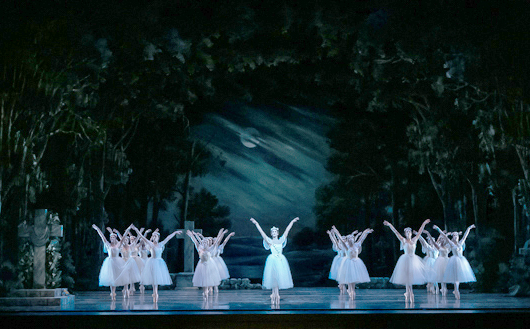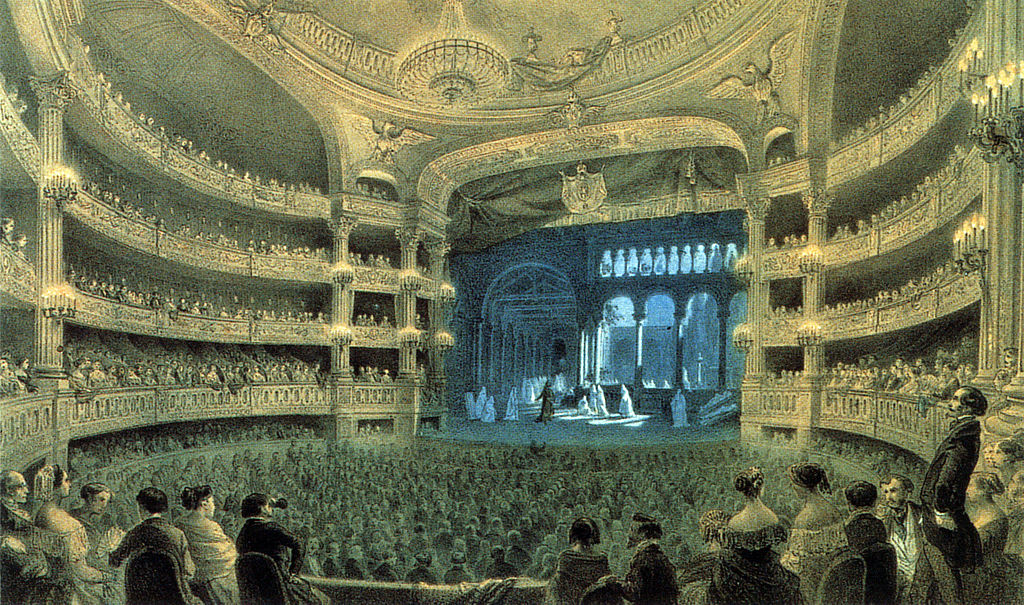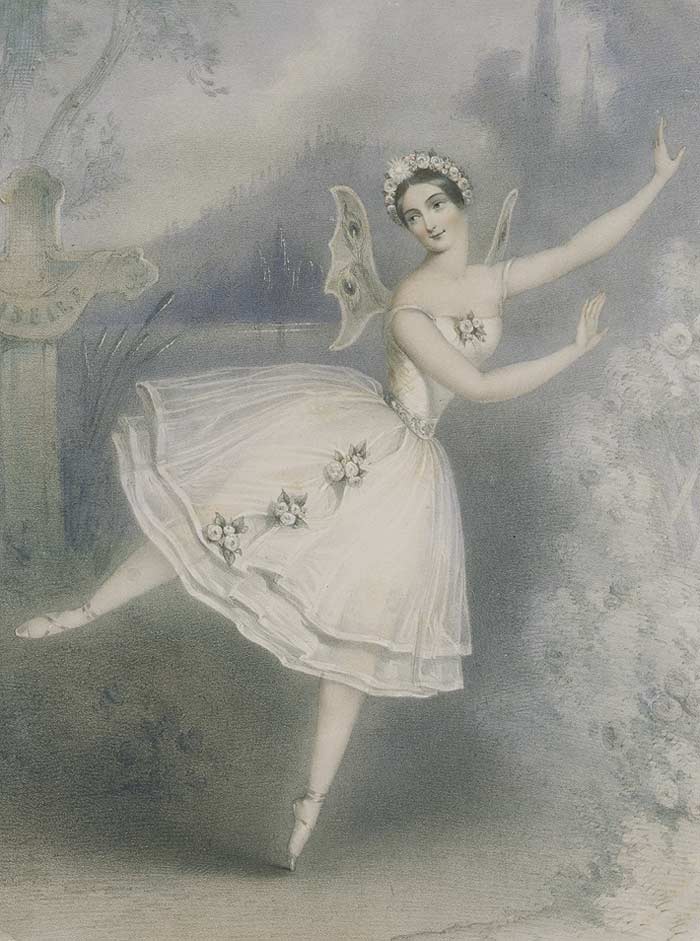“Giselle in the Forest” — Short Dance Film by The Australian Ballet with Modern Music
You know the story— Boys meets girl. Boy courts girl. Girl falls in love. Girl discovers she’s been two-timed. Girl goes mad. Girl dies. Girl becomes ghost. Boy visits girl’s grave. Boy is captured by vengeful ghosts. Girl’s ghost saves boy.
The story is, of course, Giselle and the ghosts are the Wilis. In fact, Giselle‘s original title was Giselle ou les Wilis, “Giselle, or The Wilis”. Though a product of the Romantic Era and its fascination with the supernatural, this ballet from 1841 has nonetheless endured and attained classic status. Interestingly, pop culture’s current interest in vampires, zombies etc. echos the tastes of the period in which Giselle was created.
So, let’s take a look at the Wilis, a most elegant member of the undead…
Folkloric Inspiration

The Wilis have their roots in European legend. Théophile Gautier, author of Giselle’s libretto, took his source material for the Wilis from a passage in Heinrich Heine’s On Germany:
“There is a tradition of nocturnal dancing known in Slav countries under the name of Wili. The Wilis are affianced maidens who have died before their wedding-day; those poor young creatures cannot rest peacefully in their graves. In their hearts which have ceased to throb, in their dead feet, there still remains that passion for dancing which they could not satisfy during life; and at midnight they rise up and gather in bands on the highway and woe betide the young man who meets them, for he must dance until he drops dead.
Attired in their bridal dresses, with garlands of flowers on their heads, and shining rings on their fingers, the Wilis dance in the moonlight like the Elves.”
Theatrical Development

The Wilis’ theatrical ancestors are found in the Ballet of Nuns from the opera Robert le Diable (1831) by Giacomo Meyerbeer and in the full-length ballet La Sylphide (1832). In the Ballet of the Nuns, ghosts of nuns rise from their abbey graves and dance in the moonlight. In La Sylphide, spirit-like beings known as sylphs dance in the forest at night. The visuals of these ballets with their white-clad women dancing in eerily-lit scenes set the stage for arrival of the Wilis nearly a decade later. Both the Ballet of the Nuns and La Sylphide originally starred Marie Taglioni, the ballet star credited with helping create the “tutu and toe-shoes” vision of the Romantic Era dancer. Anna Kisselgoff relates:
“’Robert le Diable’ raised the curtain on Romantic ballet. Naturally, there were many previous phases contributing to the Romantic esthetic in dance. But the preoccupation with the supernatural that characterized so much of 19th-century ballet could be traced to the success of the ”ballet of the nuns” in Meyerbeer’s first production at the Paris Opera.
”Robert Le Diable” led directly to the creation, in 1832, of ”La Sylphide,” the first complete Romantic ballet. The libretto for ”La Sylphide” was written by Adolphe Nourrit, the tenor who had the title role in ”Robert le Diable” and his sylph was of course, Marie Taglioni. Filippo Taglioni, her father and who is usually credited with the dances in the Meyerbeer opera, choreographed ”La Sylphide.” And another member of the same team, Pierre Ciceri, the stage and lighting designer responsible for the gasp-producing effects in ”Robert le Diable,” introduced the same ghostly gas lighting into ”La Sylphide.”
Otherworldly Attire

The long white tutus of the Wilis are based on the costume trend that Taglioni introduced for the more benign creatures of La Sylphide. The University of Utah’s ballet history page explains:
“The Romantic tutu is first seen in La Sylphide and was designed by Eugène Lami (1800-1890) […] By complementing Taglioni’s ethereal style of dancing the tutu triggered a new image in the mind of the public; that of the Romantic ballerina, transmuted into a creature soaring amidst a mist of muslin.[…] Like the pointe shoe, the Romantic tutu actively assisted the ballerina with the interpretation of her role, adding a buoyancy and unreal suspension to her fleeting steps and a softness to her landings.55″
Are They a Dream?
Of course, a possible interpretation of the Wilis is that they are a figment of Albrecht’s tortured thoughts. Anna Kisselgoff writes, “Whether he actually sees her ghost or imagines it in Act II is the kind of question 19th-century Romantic ballets such as this one have always left unanswered.”
What do you think? What’s your interpretation?





Excellent! This makes me want to see Giselle live. I don’t even care who performs it.
Oh! You’ve never seen it live Lisa? You’ll love it! It’s a beautiful ballet! 🙂
Thanks so much Lisa! Seeing it live is a must! 🙂
I teach dance history, and next week we’ll be hitting the Romantic Era. It’s such an amazing period in dance, and the story lines? HILARIOUS. Gah! I’m so excited…
How fun! Well feel free to include this in your lesson plan if it is helpful! 🙂 Enjoy, and thanks for the comment!